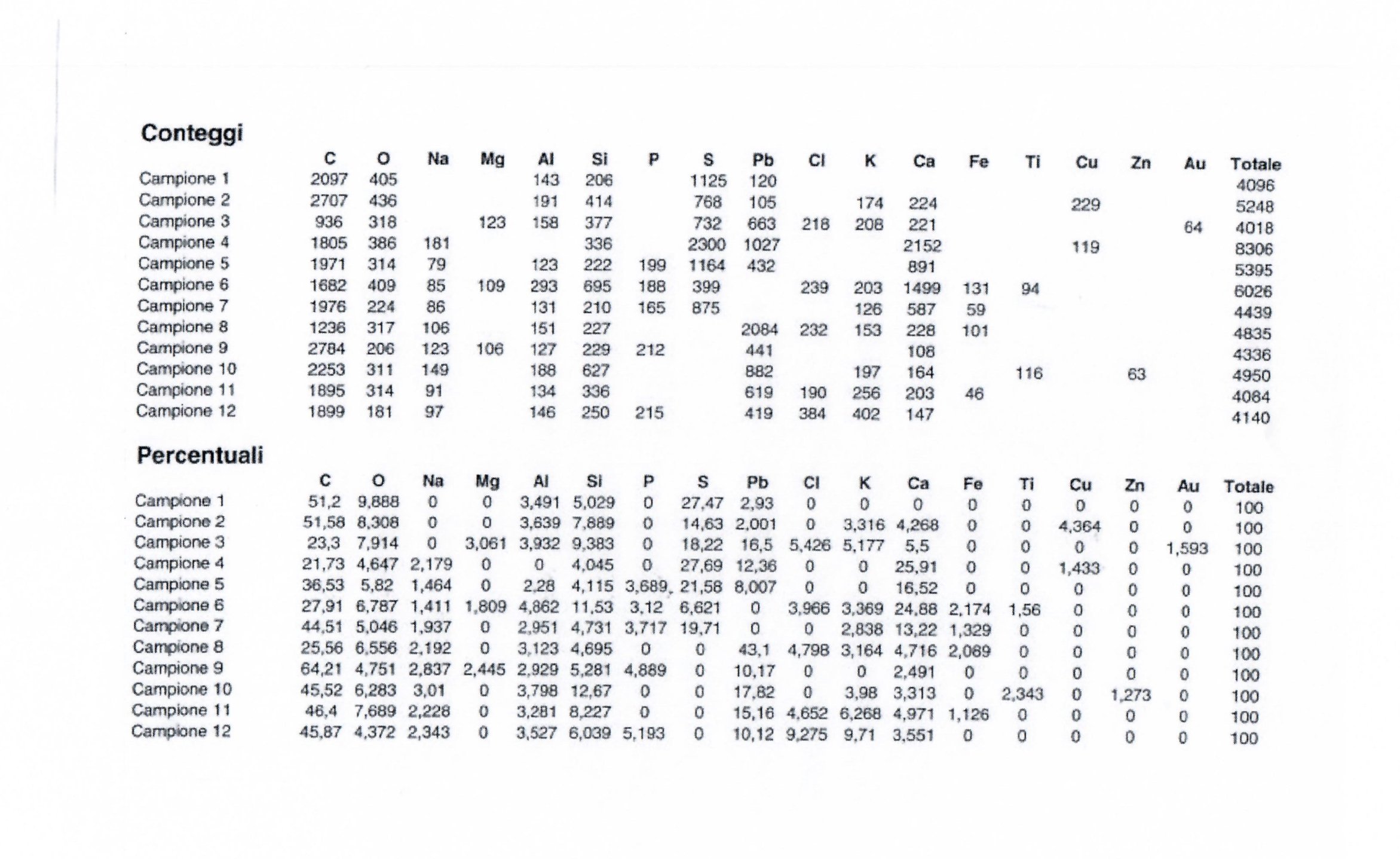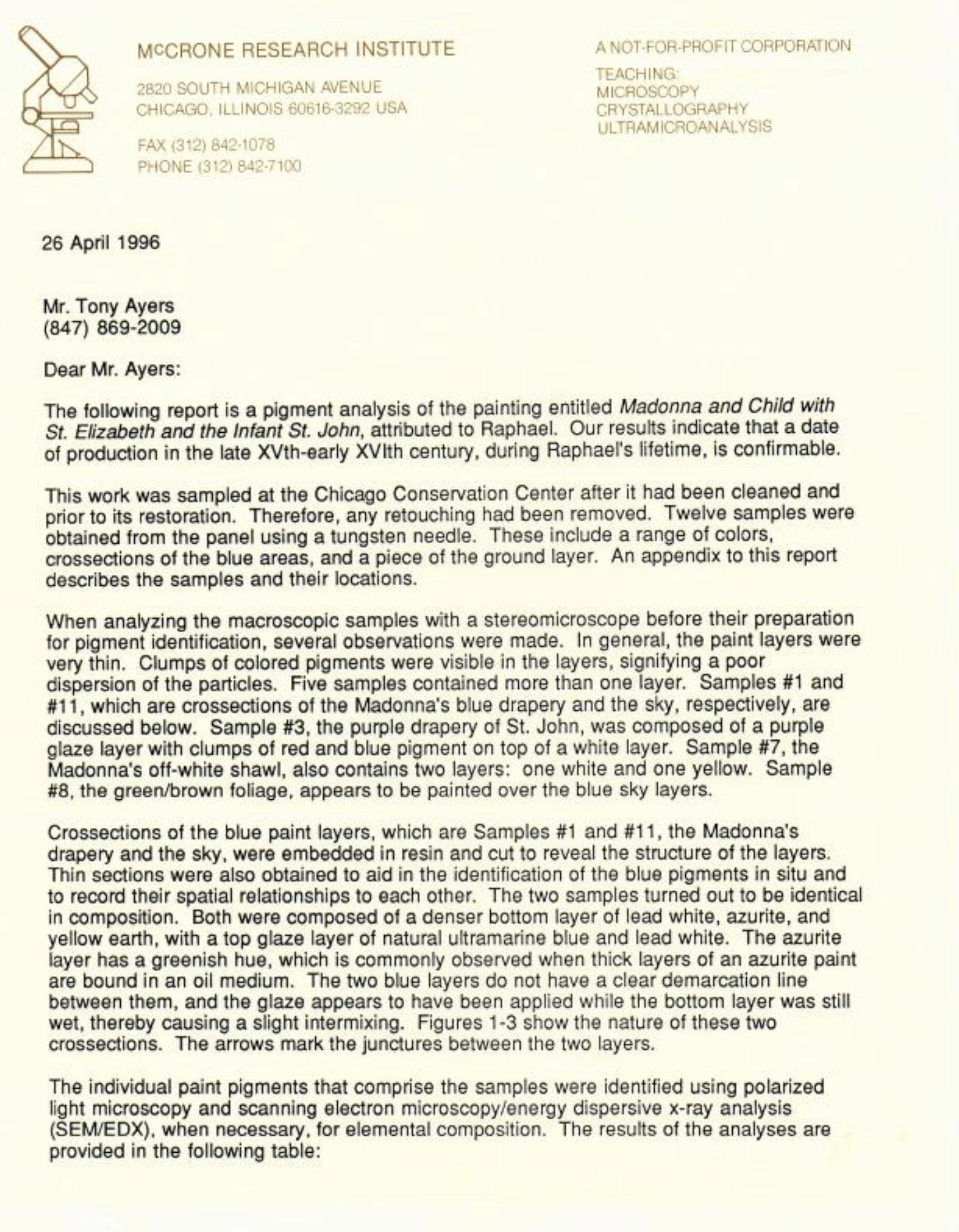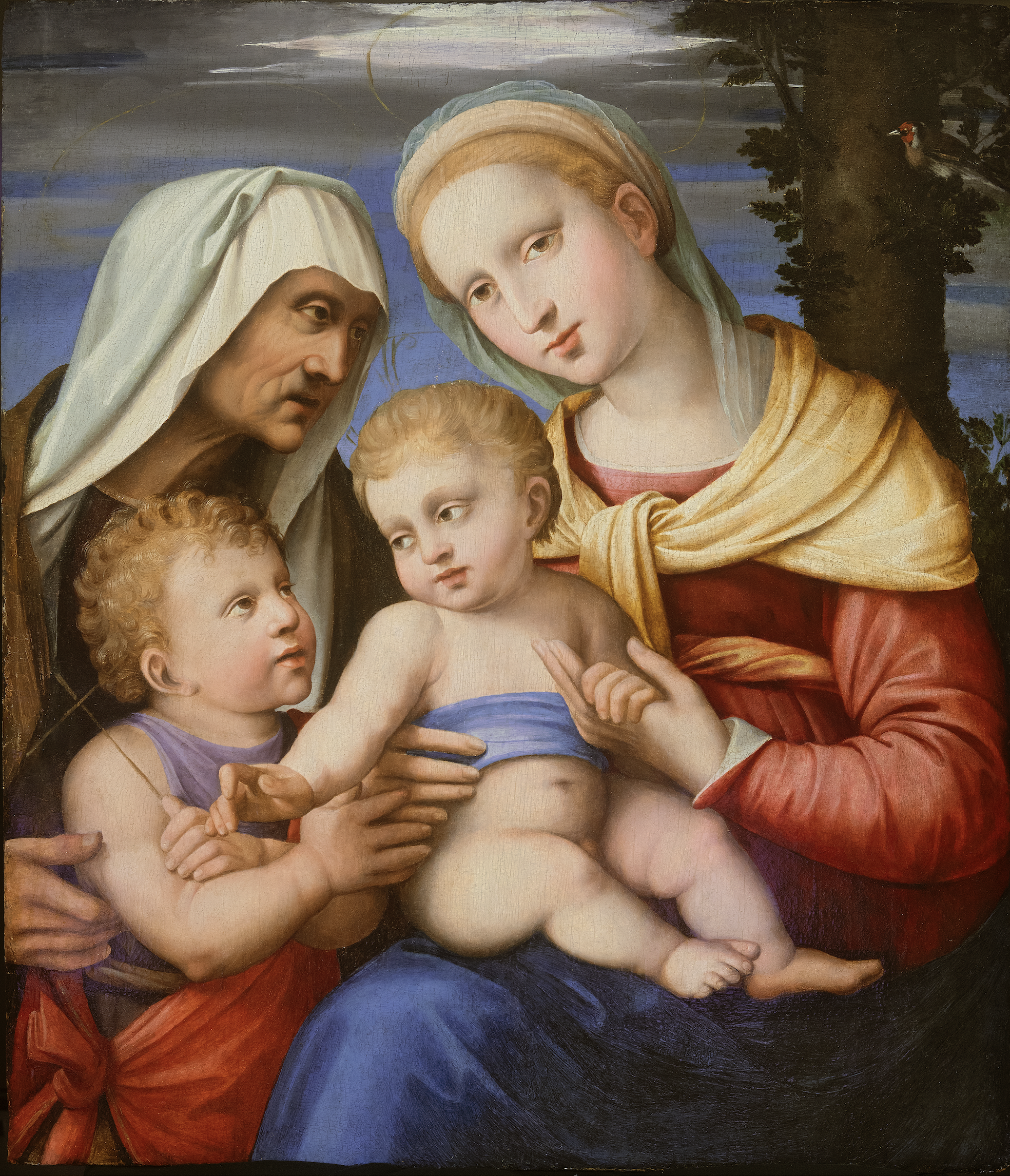There is a drawing in Lille (Musée des Beaux-Arts 431, Joannides cat. no. 69) by Raphael, which resembles the composition of the Flaget Madonna. Sylvia Ferino-Pagden has stated that the Lille drawing is preliminary to the Flaget Madonna.
“This drawing is considered a preliminary design for the Madonna Terranuova (Berlin), yet it is much closer to the composition of the Flaget Madonna, particularly when one considers the vertical fold mark (verbally confirmed as such by a curator at Lille) present at the left of the drawing which corresponds precisely with the cropping of the composition of the Flaget Madonna.”
An Umbrian copy of the drawing (Staatliche Museum, KDZ 2358 recto, attributed by Sylvia Ferino-Pagden to Domenico Alfani) confirms this cropping. The changes required, from either drawing, to arrive at the Flaget Madonna are much less drastic than would be needed to convert either to the Terranuova Madonna.


The Vatican Research Laboratory





McCrone Research Institute






Panel Construction
Fortunately, the Flaget Madonna’s panel has never been thinned and remains relatively flat. Some have suggested it has been narrowed slightly, although one can not be sure. The panel is consistent with known panels of Raphael, even down to; the shape and dimensions of the two horizontal keyed inset battens (actually to the millimeter), construction, species, and overall dimensions. The back of the Flaget Madonna is remarkably similar to several photographs of panels of known Raphael in the Princeton Raphael Symposium. The back of the Bindo Altoviti (before transfer) is the spitting image of the Flaget Madonna, even down to the battens' proportions and positions (minus the butterfly repair on the former). The species identification, Abies (True Fir) for the battens and Populus (Poplar) for the panel, was performed by the Center for Wood Anatomy Research, U.S. Forest Products Laboratory, Madison, Wisconsin, and is consistent with what one would expect of an early Italian panel painting and used by Raphael.
Raphael’s Early Work In The National Gallery: Painting Before Rome Article from Ashok Roy, Markita Spring, Carol Plazzotta
Comparison of The Flaget Madonna’s findings with the detailed catalogue of technical data from the National Gallery investigation of seven paintings from Raphael's pre-Roman period.
Research is known as National Gallery Catalogue, Raphael From Urbino to Rome.
National Gallery Catalogue
“All the work considered here is on wood panels. Where the wood sample has been identified as poplar with one exception.”
Flaget Madonna Match
European poplar panel for Flaget Madonna.
Note: The size and construction of the panel, including two stretchers, are also in line with Raphael’s panels.
National Gallery Catalogue
“Raphael was a prolific draughtsman, And he characteristically prepared his painting compositions in advance on paper.”
Flaget Madonna Match
Sylvia Ferino Pagden has identified a Raphael drawing at the Lille Museum in France as the study for the Flaget Madonna.
National Gallery Catalogue
“The National Gallery panels are all prepared with layers of Gesso... The Gesso had been stirred strongly... the dried layer is full of air bubbles and small, randomly scattered white dots...”
Flaget Madonna Match
Presence of white dots/ air bubbles in gesso of Flaget Madonna.
National Gallery Catalogue
“The gesso was then covered with... small amounts of lead-tin yellow...”
Flaget Madonna Match
A small amount of lead-tin yellow was detected on the Flaget Madonna by the McCrone Institute and confirmed by the Vatican Cabinet of Scientific Research. Note: Methodology: Polarized light microscopy, scan electron microscopy, energy dispersion, and SEM-EDS for elemental composition.
National Gallery Catalogue
“The binding medium of the paint in the works discussed here is predominantly drying oil.”
Flaget Madonna Match
Dr. Nicolas Eastaught at Art Analysis Of Research of “The Flaget Madonna... appears to be exclusively oil...” Note: Eastaugh’s methodology: N/A Confirmed by Dr. McCrone - McCrone Institute.
National Gallery Catalogue
“Another new finding is the Presence of colourless glass in the paint, which has been detected in the imprimatur of the painting and also in other paint layers, particularly those consisting of red lake.”
Flaget Madonna Match
Dr. Gabrielli of the Vatican Museum (plate 10A) shows the “presence of a colourless material... with the constitution of manufactured glass”. Found in an area with a red lake. (purple tunic).
National Gallery Catalogue
“Where ultramarine is used as a surface paint, it was often applied over a layer of azurite, azurite and white, leading to a thicker paint structure than elsewhere”.
Flaget Madonna Match
Dr.McCrone‘s analysis shows the presence of azurite/lead white in combination with ultramarine in the robe of the Madonna. Note: Ultramarine was rarely used except for a few, including Raphael, due to its exorbitant cost.
National Gallery Catalogue
“In modeling the flesh paints... may well have been a development (by Raphael) of the traditional method of underpainting flesh with Terra Verde.”
Flaget Madonna Match
Dr. Gabrielli of The Vatican Scientific Research Cabinet writes about the Flaget Madonna “In point 7 (pigment sample), There is more iron and potassium, which means that in this point, the painter used the Terra Verde pigment to cool the color of the flesh... “
National Gallery Catalogue
“Raphael also used his hands and fingers to blot and model wet surfaces... On close examination, fingerprints and palm prints are visible in the shadows of the heads in the Mond Crucifixion.”
Flaget Madonna Match
On close examination of enhanced digital photographs, palm prints, and fingerprints are also visible on the Flaget Madonna. These prints were physically compared at the National Gallery and are in keeping with the ones on The Mond Crucifixion.
National Gallery Catalogue
“The National Gallery pictures have revealed that Raphael employed materials outside the standard canon of... early Cinquecento painting... they include red lead (lead tetroxide) orpiment (mineral arsenic).
Flaget Madonna Match
Dr. Eastaugh mentions the Flaget Madonna: “The arsenic sulfide pigment orpiment was a surprising discovery in the Flaget Madonna...” Note: Dr. Eastaugh’s Methodology N/A.
National Gallery Catalogue
“Raphael sometimes made more Major changes to the background of his compositions.”
Flaget Madonna Match
The background of the Flaget Madonna is not characteristic of Raphael and is believed to have been designed and added after the painting had begun.
National Gallery Catalogue
. “The foregrounds, backgrounds, and sky paints were laid in with broadly horizontal strokes.”
Flaget Madonna Match
National Gallery Catalogue
13. “He also employed standard mixtures to create the green and blues of landscapes, including earth pigments and verdigris, in various combinations.”
Flaget Madonna Match
National Gallery Catalogue
14. “Analysis of Raphael’s painting technique during his early career in The Marches, Umbria and Tuscany show that it was thoroughly grounded in the traditions of central Italy.”

